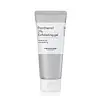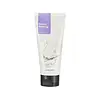What's inside
What's inside
 Key Ingredients
Key Ingredients

 Benefits
Benefits

 Concerns
Concerns

 Ingredients Side-by-side
Ingredients Side-by-side

Water
Skin ConditioningCellulose
Absorbent2,3-Butanediol
Humectant1,2-Hexanediol
Skin ConditioningPanthenol
Skin ConditioningAllantoin
Skin ConditioningVetiveria Zizanoides Root Oil
MaskingRosmarinus Officinalis Leaf Oil
MaskingDipropylene Glycol
HumectantCarnitine
CleansingSerine
MaskingArginine
MaskingCapryloyl Salicylic Acid
ExfoliatingLactobionic Acid
BufferingMandelic Acid
AntimicrobialSalicylic Acid
MaskingCitric Acid
BufferingCarbomer
Emulsion StabilisingHydroxyethylcellulose
Emulsion StabilisingTrisodium EDTA
Tromethamine
BufferingPolyglyceryl-10 Stearate
Skin ConditioningPolyglyceryl-10 Oleate
Skin ConditioningDisodium Phosphate
BufferingSodium Phosphate
BufferingWater, Cellulose, 2,3-Butanediol, 1,2-Hexanediol, Panthenol, Allantoin, Vetiveria Zizanoides Root Oil, Rosmarinus Officinalis Leaf Oil, Dipropylene Glycol, Carnitine, Serine, Arginine, Capryloyl Salicylic Acid, Lactobionic Acid, Mandelic Acid, Salicylic Acid, Citric Acid, Carbomer, Hydroxyethylcellulose, Trisodium EDTA, Tromethamine, Polyglyceryl-10 Stearate, Polyglyceryl-10 Oleate, Disodium Phosphate, Sodium Phosphate
Water
Skin ConditioningCellulose
AbsorbentGlycerin
HumectantButylene Glycol
HumectantAlcohol Denat.
AntimicrobialBetaine
HumectantPanthenol
Skin ConditioningCarbomer
Emulsion StabilisingPotassium Hydroxide
BufferingAmethyst Powder
AbrasivePearl Powder
Tourmaline
Methylparaben
PreservativePropylparaben
PreservativeSynthetic Fluorphlogopite
Titanium Dioxide
Cosmetic ColorantCI 77891
Cosmetic ColorantParfum
Masking
 Reviews
Reviews

Ingredients Explained
These ingredients are found in both products.
Ingredients higher up in an ingredient list are typically present in a larger amount.
Carbomer is a polymer of acrylic acid. Its main role is to create a gel consistency.
A high amount of carbomer can cause pilling or balling up of products. Don't worry, most products contain 1% or less of carbomer.
Cellulose is the main component of plant cell walls. It is used as an emulsifier, absorbent, and texture enhancer.
This ingredient has many functions:
Fun fact: Cellulose is the most abundant form of organic polymer on Earth.
Learn more about CellulosePanthenol is a common ingredient that helps hydrate and soothe the skin. It is found naturally in our skin and hair.
There are two forms of panthenol: D and L.
D-panthenol is also known as dexpanthenol. Most cosmetics use dexpanthenol or a mixture of D and L-panthenol.
Panthenol is famous due to its ability to go deeper into the skin's layers. Using this ingredient has numerous pros (and no cons):
Like hyaluronic acid, panthenol is a humectant. Humectants are able to bind and hold large amounts of water to keep skin hydrated.
This ingredient works well for wound healing. It works by increasing tissue in the wound and helps close open wounds.
Once oxidized, panthenol converts to pantothenic acid. Panthothenic acid is found in all living cells.
This ingredient is also referred to as pro-vitamin B5.
Learn more about PanthenolWater. It's the most common cosmetic ingredient of all. You'll usually see it at the top of ingredient lists, meaning that it makes up the largest part of the product.
So why is it so popular? Water most often acts as a solvent - this means that it helps dissolve other ingredients into the formulation.
You'll also recognize water as that liquid we all need to stay alive. If you see this, drink a glass of water. Stay hydrated!
Learn more about Water